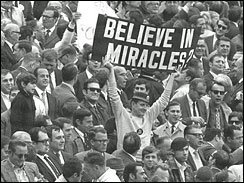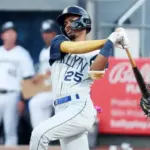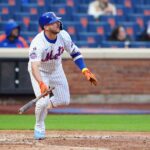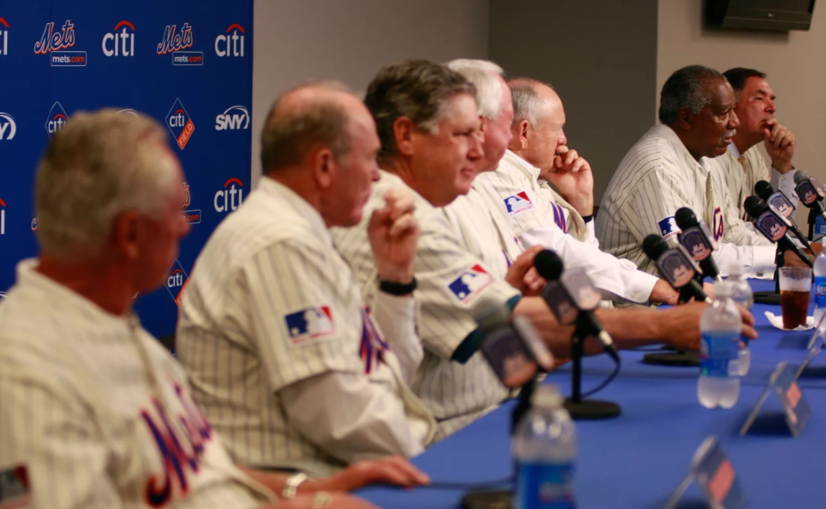
As most of you know, 2019 is the 50 year anniversary of the 1969 World Champion Mets. Here is Part Two of my four part series entitled, How The Miracle Mets Were Built. You can read Part One by clicking below.
Part 1 – The Spring Of 1968
Part 2 – The 1968 Off-Season
Part 3 – The Spring of 1969
Part 4 – The Summer of 1969
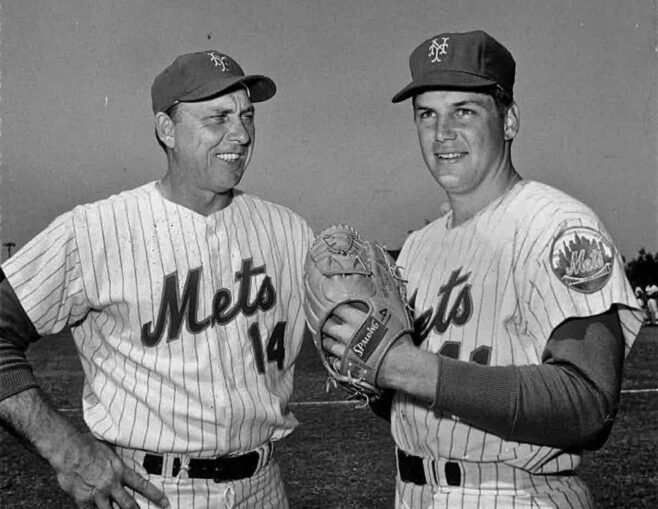
The Mets had just completed their most successful season in 1968, winning 73 games and finishing in 9th place under new manager Gil Hodges. Even though it wasn’t that much of an improvement over previous years, there were definitely some positive developments in ’68 and in Hodges the team had a visionary manager who had his players believing in themselves.
All-Star right-hander Tom Seaver (2.20 ERA, 208 K) and rookie left-hander Jerry Koosman (2.08 ERA, 1.100 WHIP) won 16 and 19 games respectively to give the Mets two reliable and exciting young pitchers to head the rotation. And while hard-throwing righty Nolan Ryan was inconsistent and plagued by blisters, he also showed some great potential and was very highly regarded.
Seaver, of course, would eventually become one of the best starting pitchers in the game and would carve out an incredible Hall of Fame career, mostly as the ace of the Mets rotation. Koosman quietly gave the Mets 12 solid years and would retire with 227 wins while pitching for some pretty bad teams. And as for Nolan, how does 324 wins and 5,714 strikeouts grab you?
Unheralded righty Jim McAndrew came up from the minor leagues and showed that he could be a useful 4th or 5th starter. He started 12 games that season and posted a 2.28 ERA and 1.05 WHIP.
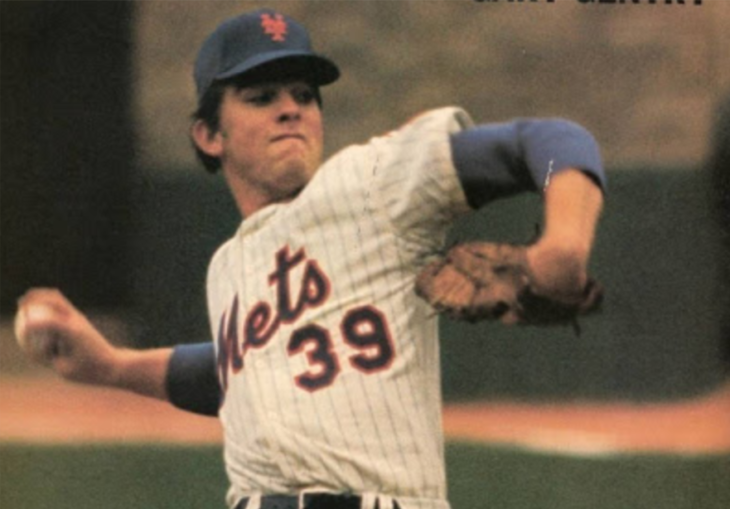
On the farm, although Les Rohr had an injury-plagued and wasted year, the Mets were developing another good crop of young pitchers such as Rich Folkers, Jim Bibby, Barry Raziano, and Steve Renko.
Additionally, both “Baby Face” Gary Gentry (pictured above) and lefty swingman Tug McGraw pitched well enough at Triple-A Jacksonville to contend for major league jobs in 1969 and each figured prominently in what was to unfold in 1969.
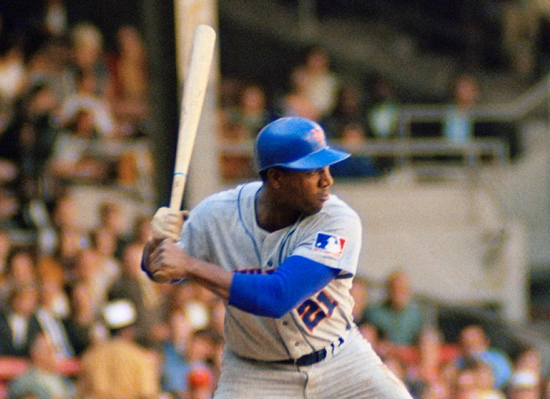
Offensively and defensively, the New York Mets were suddenly emerging as a legitimate major league team after years of lackluster production at the plate and a bumbling mess on the field.
Cleon Jones (pictured above) was solid in left field raising his average from .246 in 1967 to .297 and driving in 55 runs while posting a 137 OPS+ and swiping 27 bases.
Jerry Grote at catcher and Bud Harrelson at shortstop excelled defensively and Grote also hit well enough to solidify himself as the undisputed number one catcher on the team.
But there had also been many disappointments in 1968.For the third year in a row, it seemed like the Mets had traded for a center fielder who was a complete bust.
Following in the footsteps of Billy Cowan and Don Bosch, newly acquired Tommie Agee played in 132 games and batted an anemic .217 with five home runs and 17 RBI, while striking out 103 times after back to back All Star appearances in ’66 and ’67. Would Agee get another chance to redeem himself?
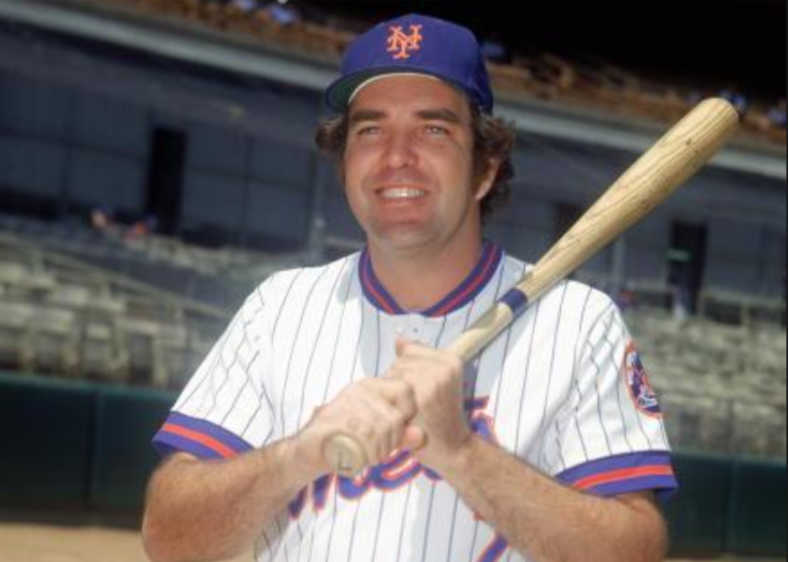
Ed Kranepool and Ron Swoboda who had once been hailed as the future hitting stars of the team, disappointed once again. Kranepool, still only 23, posted a dismal .295 slugging percentage and tallied just 13 doubles and three home runs in 405 plate appearances. Swoboda, who was touted as the team’s future power-hitting corner outfielder, was only slightly better finishing the season with a .373 slugging while striking out a career high 113 times.
Nobody on the team had more than 15 home runs and that was old man Ed Charles who won the third base job in spring training. Nobody on the team drove in as many as 60 runs.
The good news was the Mets had to finish better than ninth in 1969 because divisional play had begun and the worst the team could do was finish 6th. The first order of business was to prepare the list of eligible players for the expansion draft to stock the new Montreal and San Diego franchises.
Although the Mets’ full list was never divulged, I read that Ed Kranepool was eligible, but was withdrawn after the Expos picked Don Shaw because Shaw and Kranepool were two of M. Donald Grant’s favorite players and the Mets weren’t about to give up both.
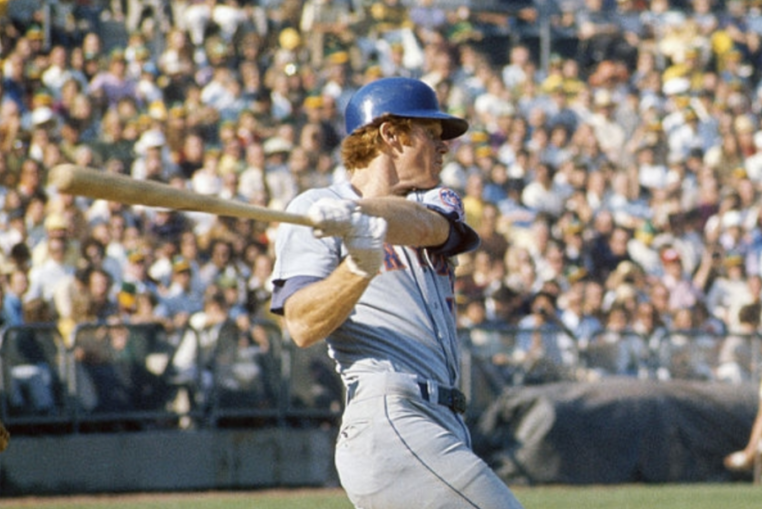
The Mets also wound up losing Dick Selma who had been a useful swing man, but never really established himself, as well as several minor leaguers including outfielder Jerry Morales and pitchers Ernie McAnally and John Glass.
Following the expansion draft, the Mets sold Don Bosch to the Expos. In the Rule 5 draft, the Mets selected 20-year old infielder Wayne Garrett (pictured above), who would assume a utility role in the upcoming season.
Before the start of spring training in 1969, the Mets sent one-time stellar catching prospect Greg Goossen to the expansion Seattle Pilots for veteran minor leaguer Jim Gosger. Other than that, the Mets did not make a single deal in the off-season.
Most experts thought that the Mets had a good shot at beating out the expansion Expos, although even that was in doubt because in Rusty Staub and Donn Clendenon, Montreal had a pair of professional hitters that the Mets couldn’t match.
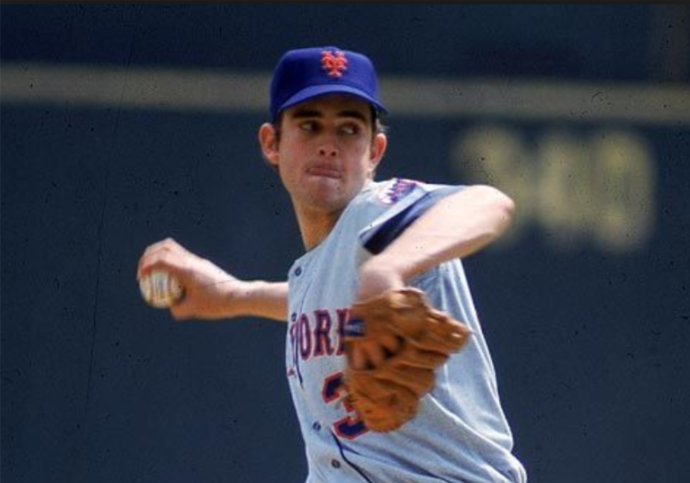
Optimistic Mets fans saw Nolan Ryan joining Seaver and Koosman in the regular rotation possibly along with Gentry or McGraw to give the Mets an outstanding young rotation. Gentry had been making steady progress ever since the Mets signed him out of Arizona State in 1967, but was he ready for the major leagues?
McGraw was definitely ready for another shot, but would he stick this time, and would he start or relieve?
Personally, I thought that the Mets had a chance to possibly beat out both the Expos and Phillies, and maybe even the Pirates, but the Chicago Cubs and the defending league champion St. Louis Cardinals looked like they would dominate the division.
As we all know, things fell into place very nicely for the 1969 Mets. More in my next post.
